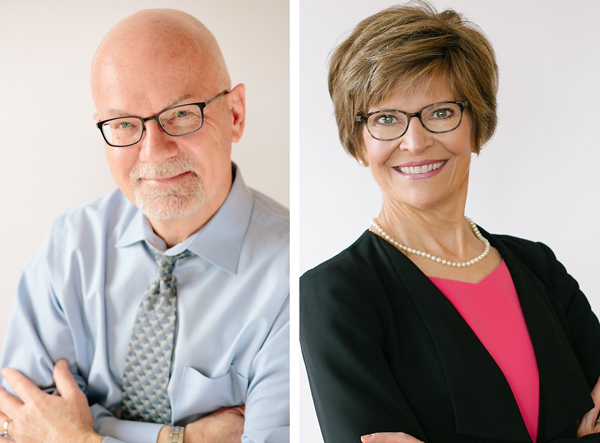

COVID-19 has placed a spotlight on the nursing home industry and the challenges that nursing home owners, operators, administrators and other top managers face in keeping residents safe and well.
They’ve been the subject of a mountain of press and social media attention; bloodied by some and treated a little more kindly by others.
Regardless of the tone of the commentators, the intent has been clear — COVID-19 should be a wake-up call for the industry, and the government agencies, elected officials and public that impact it.
The message to nursing homes is similar to that for almost every other industry (and every aspect of daily life for that matter) — the world has changed. What they’ve done in the past is not what they’ll do in the future. Their customers and stakeholders will want and expect more — and better.
Milton Friedman said: “Only a crisis — actual or perceived — produces real change. When that crisis occurs, the actions that are taken depend on the ideas that are lying around.”
The bad news is that there’s a crisis. The good news is that there are plenty of ideas to improve nursing home care lying around.
The industry has the opportunity to tap into these ideas and lead — to be the architect of the new normal.
A sampling of those ideas:
- Address the fundamental problems that contribute to lower quality care and infection control — too few staff to serve residents, inadequate training provided to front line workers, and low wages and poor benefits that lead to high levels of direct care staff turnover and increased use of temporary employees that travel from facility to facility.
- Add specificity to vague rules. For example: the rule that says that nursing homes must employ staff “sufficient to meet resident needs.” A consumer finds that language meaningless, regulators find it unenforceable. It’s like trying to control speeding on the interstate by posting a sign that says “Drive at a safe speed.” Minimum thresholds for numbers of frontline staff are essential if a goal of providing consistent high quality care will be met.
- Prioritize infection control procedures ALL THE TIME by ensuring adequate testing supplies and ongoing use of personal protection equipment, tightening up who can visit facilities and when, providing routine staff health checks, ensuring that all employees have access to sick leave benefits, and isolating or not admitting those with infectious disease.
- Use tax dollars to pay for results, rather than for volume of services. The consistently good performers should be rewarded and consistently poor ones should be penalized. If the poor ones don’t improve, they should be given technical assistance and expected to adopt best practices in the industry. If they don’t, tax dollars should no longer pay for unsatisfactory results.
- Re-tool the role of agencies in state government that do the mandated “inspections” of nursing facilities. Rather than have surveys focused on violations of regulations and writing citations, they should ALSO look for the things being done well, innovations, etc. and share those ideas and methods with all other facilities. The goal of the surveys should be to use both sticks AND carrots to improve the quality of life of residents everywhere.
- Take a fresh look at how nursing home care is funded. Medicaid is a primary payer, and those funds are constantly squeezed by state governments. As a result, facilities too often end up falling into have and have-not camps; where those reliant on Medicaid provide less quality care and those who have a higher percentage of private payers provide better care. All Americans deserve good care, regardless of who’s paying the bill. The current payment system contributes to spotty quality, and needs to be overhauled.
- Re-energize state long-term care ombudsman’s offices by requiring staff members to be out in facilities much more frequently to talk with residents and facility staff in order to identify and address issues of concern BEFORE they get to be big problems.
- Give people options that eliminate or delay the need for traditional nursing home care; including using tax dollars to pay family members or friends to care for that special person at home, which after all, is where most people want to live out their later years.
- Respect the rights of people to have more control over the decision on how and when their life ends. If a person sees spending year after year after year in a nursing facility as an unwanted end to their life shouldn’t they have the freedom, in consultation with their physicians, to make other choices?
Let’s face it: the pandemic didn’t cause the challenges in the nursing home industry; it simply drew more attention to them.
The big question is this — will the coronavirus lead to lasting change?
It will if the nursing home industry, government agencies, elected officials, consumers and their advocates come together to seize the moment; to not just tinker with the nursing home system America has, but to re-imagine and create the system Americans deserve.
In our mind, that translates to nursing homes that are adequately funded; employ a more-than-adequate number of staff who are well paid, trained, benefitted and respected; always prepared to control the spread of disease; and that use the tax and other dollars available to ensure continual improvement in the quality of care being provided.
Doing nothing, or doing little, should not be an option.
John and Terri Hale own The Hale Group, an Ankeny, Iowa-based consulting, advocacy and communication firm focused on older Iowans, Iowans with disabilities, and the caregivers who support them. Contact them at [email protected].






